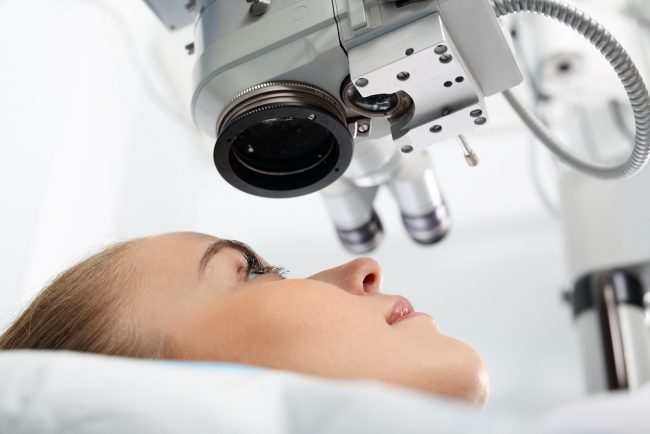
Summer is over and it’s time to book a back-to-school eye exam to ensure your child or teen is ready for this upcoming school year. Eye exams can ensure the vision is performing at its best while also providing your child or teen the opportunity to upgrade their frames to something more snappy! Boost their confidence with a fresh pair of frames and a dialed-in prescription. One of the best ways you can help your child when it comes to learning is to ensure that vision is sound. You can do that with an eye exam today.
Children and Vision
As a parent, you want your child to do the best they can in school. What if your child can’t see well? There are many children that have vision problems that go undetected. This can lead to a child being unable to read at a distance or see what learning is taking place. Studies show that around 5-10% of preschool children have vision problems. That percentage rises to 25% of school-aged children. Just how important are the eyes for learning? For most children, they must have the following to do well:
Near and distance vision
Coordination between the two eyes
Eye movement skills
Focusing ability
Peripheral vision and awareness
Hand-eye coordination
Depth perception
Color vision
Eye Exams: What Do They Entail?
A comprehensive exam is different for every person, as each person’s vision is unique. There are over 100 different ways to test that your eyes are working correctly. When you meet with your eye doctor, they will determine what tests the best suit your needs according to symptoms, medical history, and age. An eye exam provides an accurate assessment of your ability to see and also gauges the health of your eyes. It focuses on finding and correcting visual problems and through the years, also focuses on detecting subtle changes that could be a sign of more severe problems such as diabetes or high blood pressure.
We use a computerized testing unit known as a Phoropter during an exam. You’ll look through a series of test charts through various lenses placed in the unit to determine how you see best. We can determine if you are far-sighted, near-sighted, presbyopic, astigmatic or more with these tests. If vision problems are present, we can provide contact lenses and glasses to correct the problem. We will also check that your eye muscles work properly and that your eyes are working together as a team. Our goal is to make sure you see as clearly as possible so that you’re set up for success.
Why Is It Important?
Besides ensuring that your child can do well in school, an eye exam is also very beneficial to a child’s health. Many schools require annual eye exams for children entering school for the first time. However, up to 60% of visual problems can be missed in routine school examinations. That means that although your child has had an exam and has been cleared for school, there could still be visual problems present.
Only an eye doctor is specially trained for many years to detect subtle changes in vision—even in a newborn child. Children respond easier to changes in their vision
more so than adults. If a visual problem has a chance of being corrected, it is during childhood when the eyes are still developing. The most growth the eyes have is during the first 10 years of life, so this is a perfect time to stop problems before they progress. The AOA tells us that the longer a vision problem goes undiagnosed and untreated, the more a child’s brain learns to accommodate the vision problem. We would rather correct that vision in its entirety than have a child with a problem for life.
Recommendations for Life
An eye exam is not only beneficial for children, but for adults as well! The American Optometric Association recommends that children receive their first exam by 6 months of age. This is independent of whether your child is “at-risk” for vision problems or not. Between the ages of 2 and 5, your child should receive another pediatric eye exam. We generally recommend this second exam to occur around age 3 if a child is not at-risk. For many patients, this is all a child needs until they reach age 6.
The AOA recommends that children and teenagers between ages 6 and 18 receive an eye exam every two years. For children that have vision problems already, the recommendation is to have an eye exam every year. For those 18-60, they also should see their eye doctor every 2 years and then annually after that.
Your Child’s Exam
The best way to prevent vision problems from progressing is to frequently receive an examination. Not seeing the eye doctor is similar to not seeing a dentist. Problems can occur rapidly that can damage your health. When it comes to children, they are growing rapidly and their eyesight grows along with them. Safeguard their eyesight with a proper back-to-school eye exam today! Simply call our Optical Masters office at (303) 377-0752.










 {{menu-footer}}
{{menu-footer}}